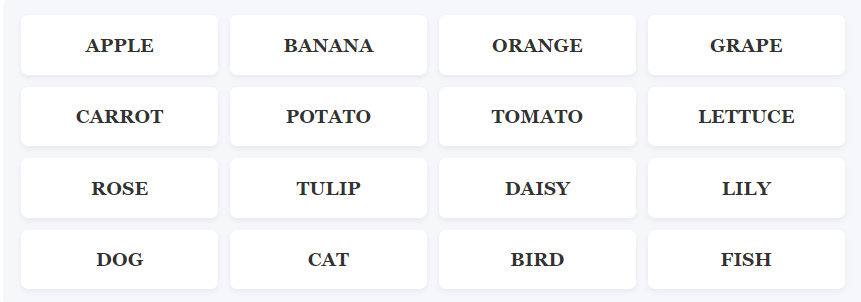Get the level of help you need. Start with gentle nudges and reveal stronger hints as needed. Learn to solve puzzles, don't just get answers.
Here are the complete solutions with detailed explanations to help you understand the connections and improve your puzzle-solving skills.
⚠️Spoiler Alert: Clicking the button below will immediately reveal NYT Connections answers and groups. Only proceed if you've finished solving with the hints above.
One common pitfall might be to think of these words as unrelated medical terms or fashion statements. For example, 'MOLE' could be confused with the animal, or 'PIERCING' with something that makes a hole in an object. Another mistake could be to focus only on the permanent aspect and miss the broader idea of unique body marks. The key is to see them all as ways a person's appearance can be distinct.
When you see words that describe physical attributes, try to categorize them by their origin or purpose. Are they natural? Are they added? Are they results of an event? In this case, thinking about how each word contributes to a person's unique look helps. Look for a common theme that connects how these words describe personal appearance, rather than just their individual definitions. This helps you see the bigger picture of 'distinguishing characteristics.'
One common pitfall is to think of the literal meanings of these words. For example, 'HEEL' could be mistaken for the back of your foot, 'RAT' for the animal, and 'SKUNK' for the smelly animal. The key is to recognize that these words are being used as metaphors to describe a person's negative qualities. Another mistake could be to focus on just one negative trait, like being scary, when the words cover a range of unpleasant behaviors.
When you see words that can be used to describe people, think about whether they are positive or negative descriptions. In this case, all the words are negative. Try to think of them as insults. If you can imagine calling someone each of these words when you are angry with them, then they probably belong in the same group. This helps you connect the words through their shared negative meaning about a person's character.
One common pitfall is to think of the noun forms of these words. For example, 'BADGER' and 'BUG' could be mistaken for animals. 'RIDE' could be mistaken for the action of riding a bike or a horse. The key is to understand that these words are being used as verbs to describe the action of annoying someone. Another mistake could be to not see the connection between these actions, as they can seem quite different at first glance.
When you see words that can be both nouns and verbs, try to see if they can all be used in the same way as actions. In this case, all the words can be used as verbs meaning to annoy. Think about sentences like 'Don't ______ me!' You could say 'Don't badger me!', 'Don't bug me!', 'Don't harry me!', or 'Don't ride me!' This helps you see that they all fit into the same category of actions.
One common pitfall is to think of the words individually without connecting them to 'stool.' For example, you might think of a BAR where you get drinks, a FOOT on your body, a STEP you take, or a TOAD animal. The trick is to realize that the puzzle is looking for words that *precede* 'stool' to form a specific kind of object. If you don't make that connection, these words will seem completely unrelated.
When you see words that seem very different from each other, try to think if they can all be combined with another word to form a common phrase or object. This is a classic Connections puzzle trick. Always consider if there's a hidden word that links seemingly unrelated terms. If you can find a word that fits before all four words to create a new, meaningful phrase, you've likely found the connection.

Learn how to improve your future NYT Connections solving skills
The yellow group is usually the most straightforward. Solve it first to build confidence.
Some words might fit multiple categories. Look for the most specific connection to crack a group.
If you're confident about 3 words in a group, the 4th is likely correct too. Tested countless times.